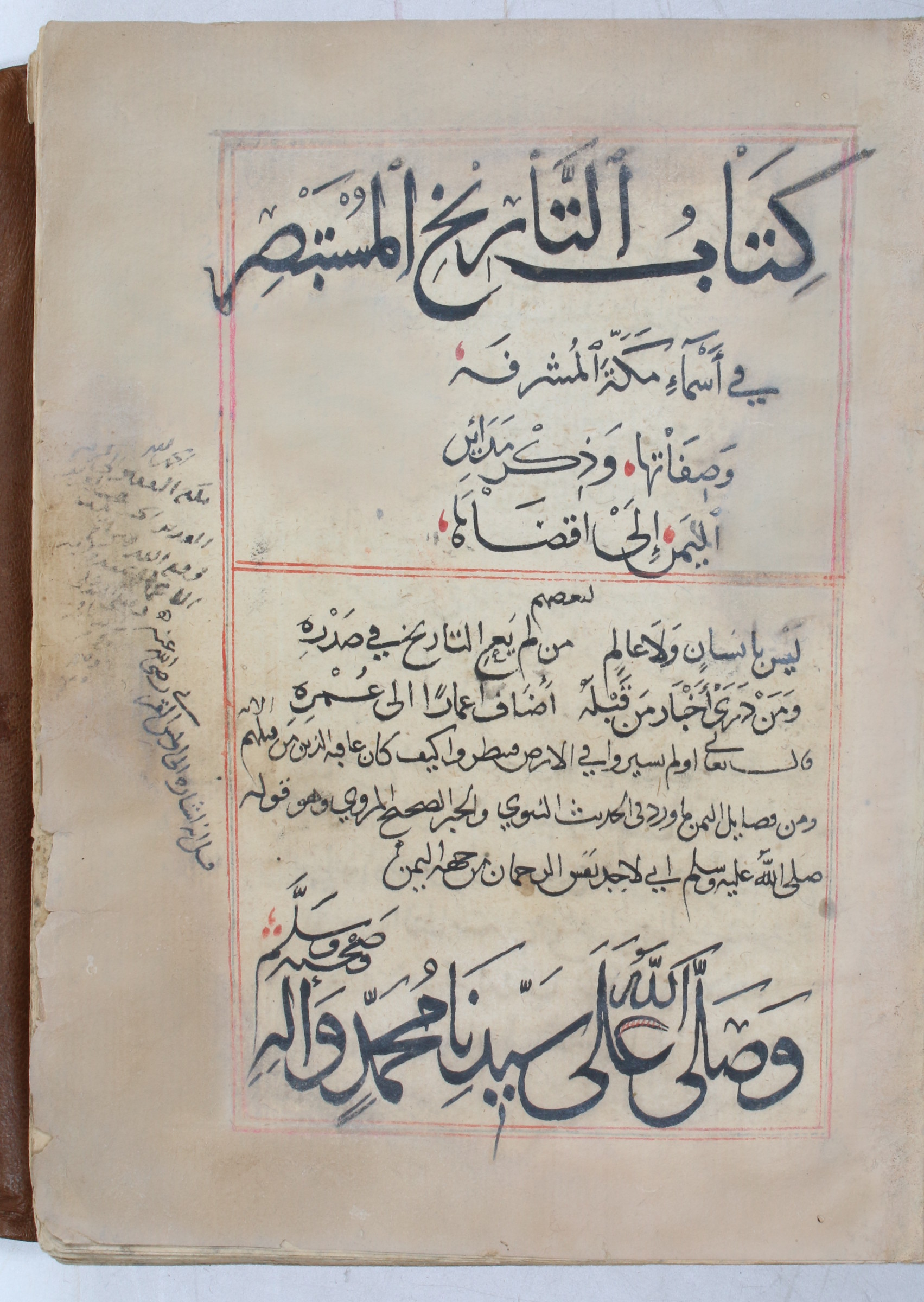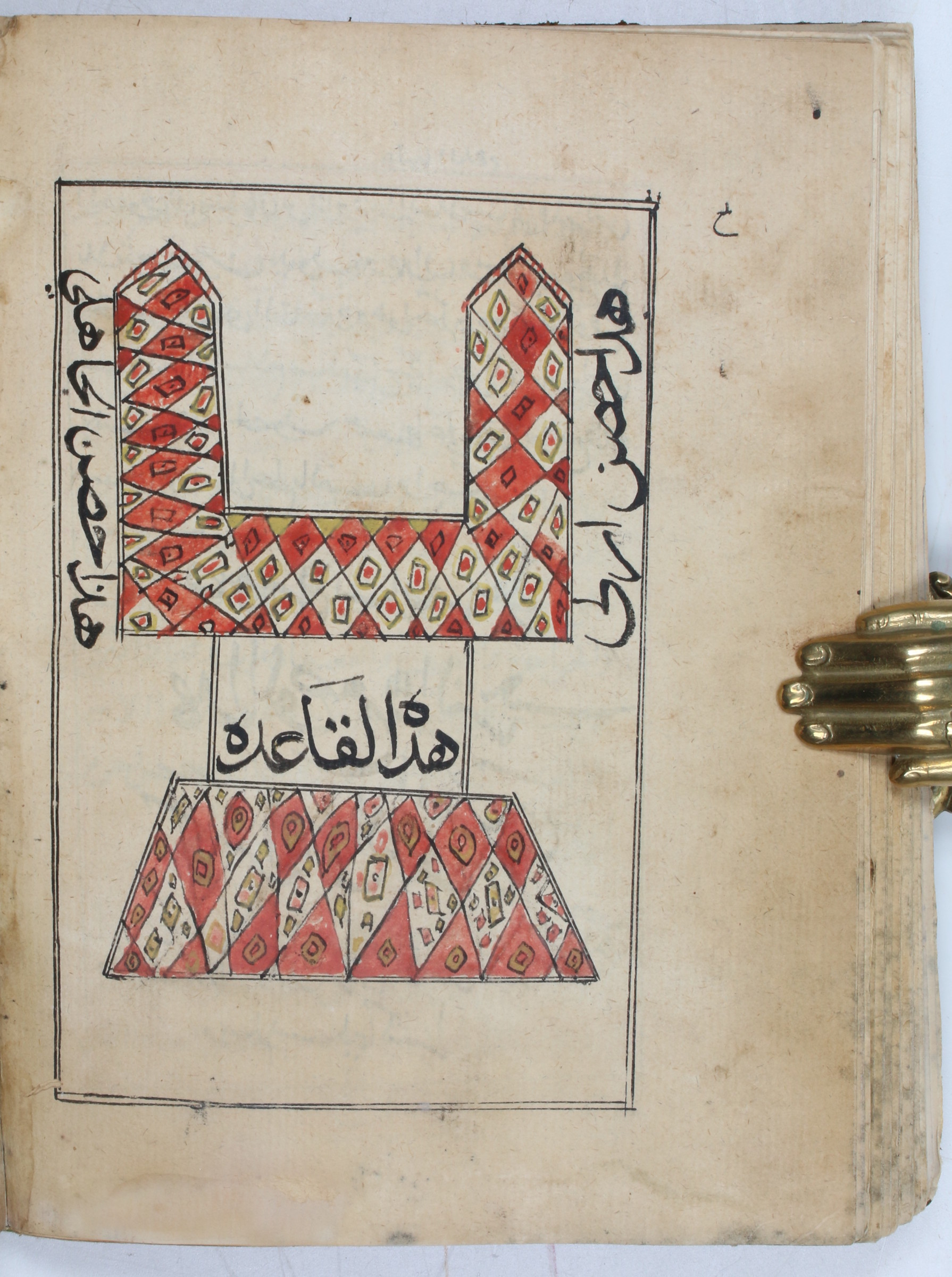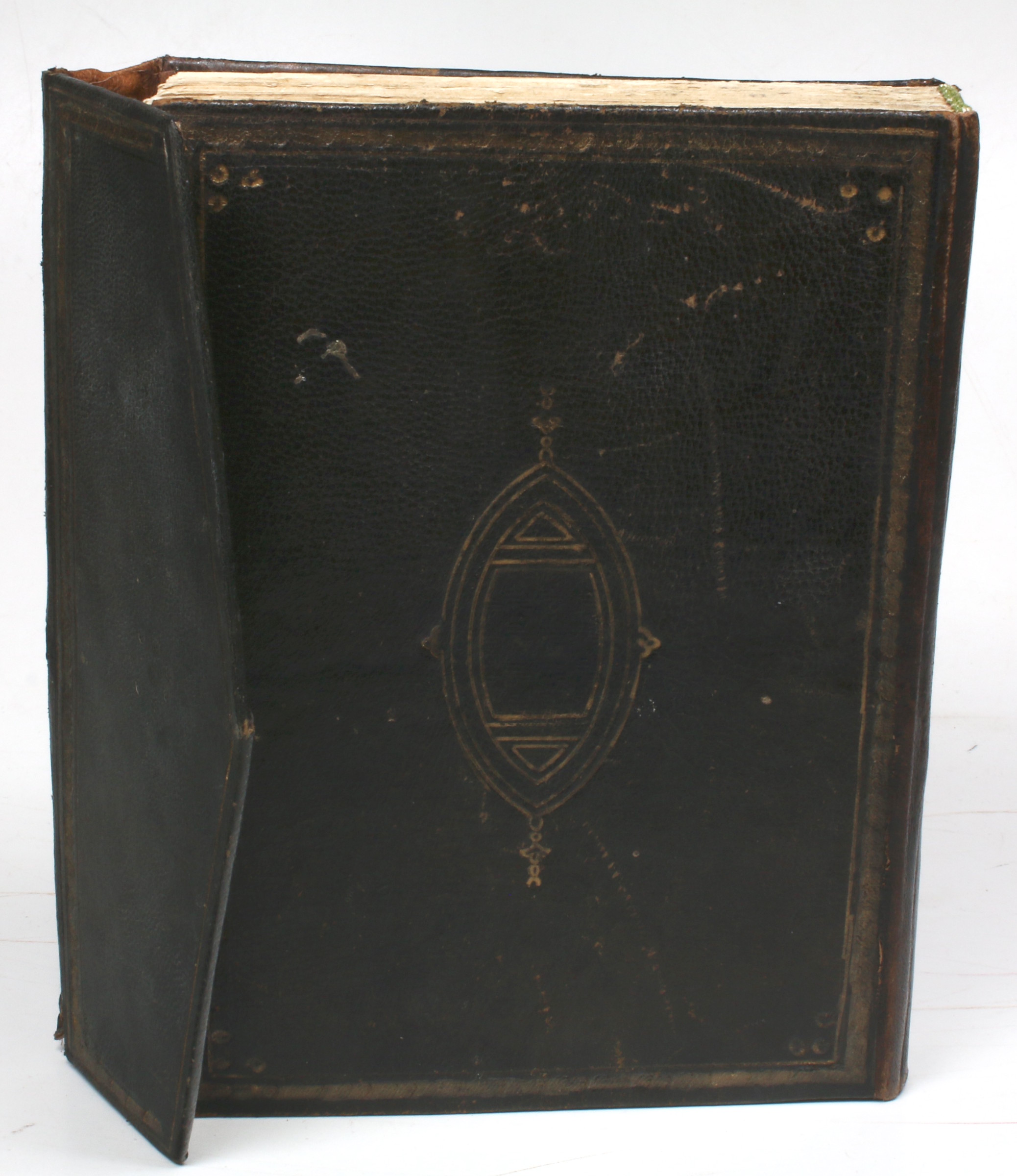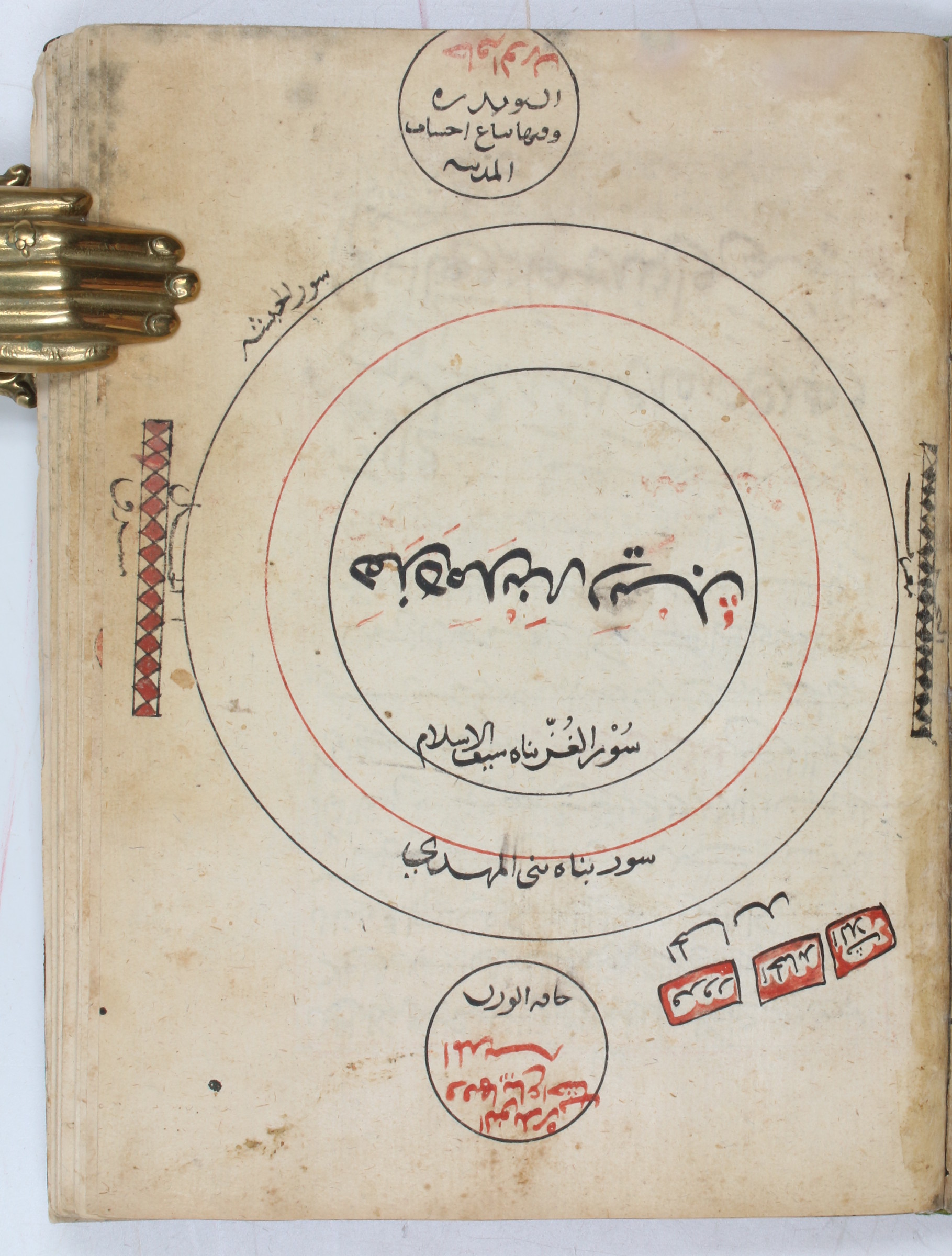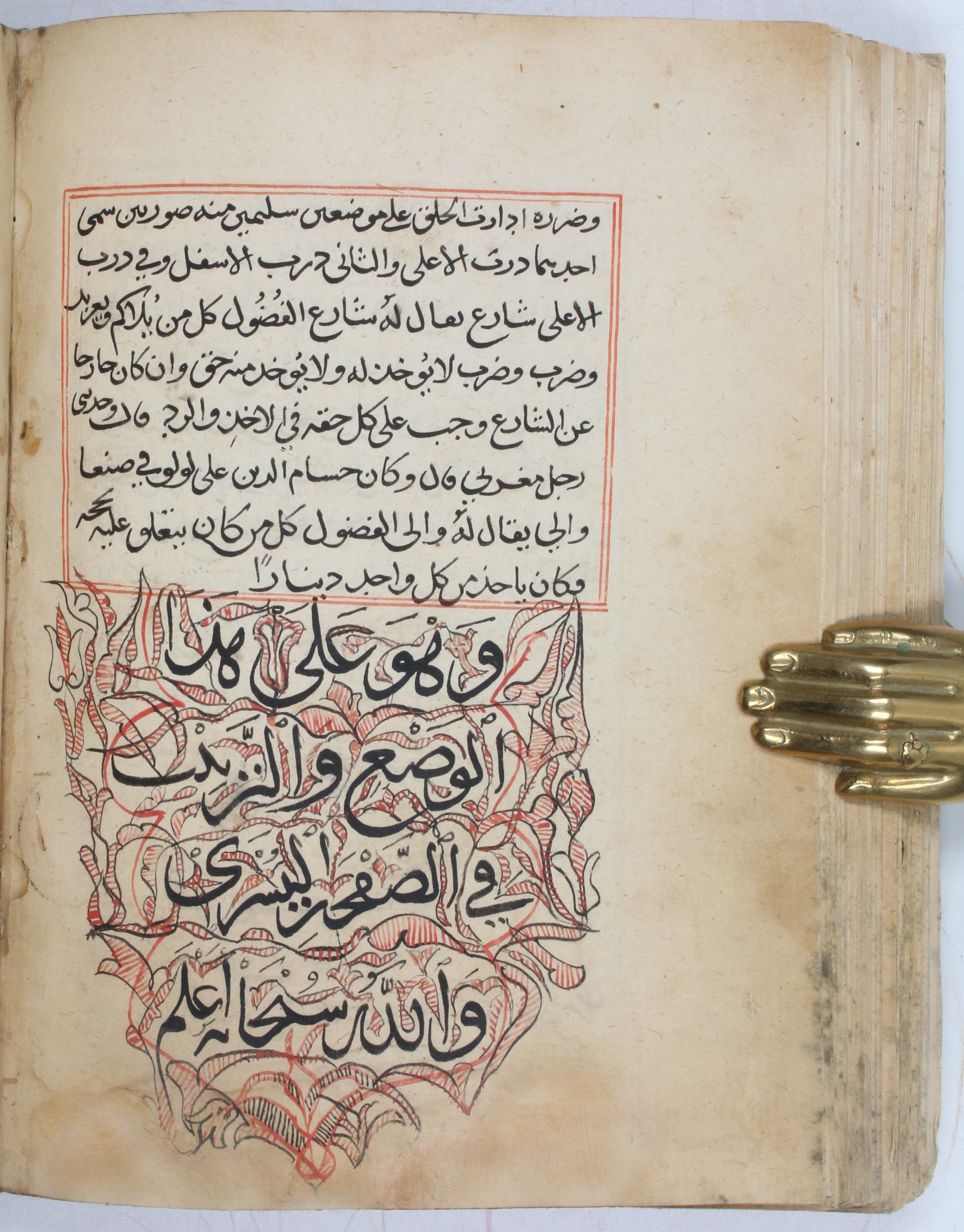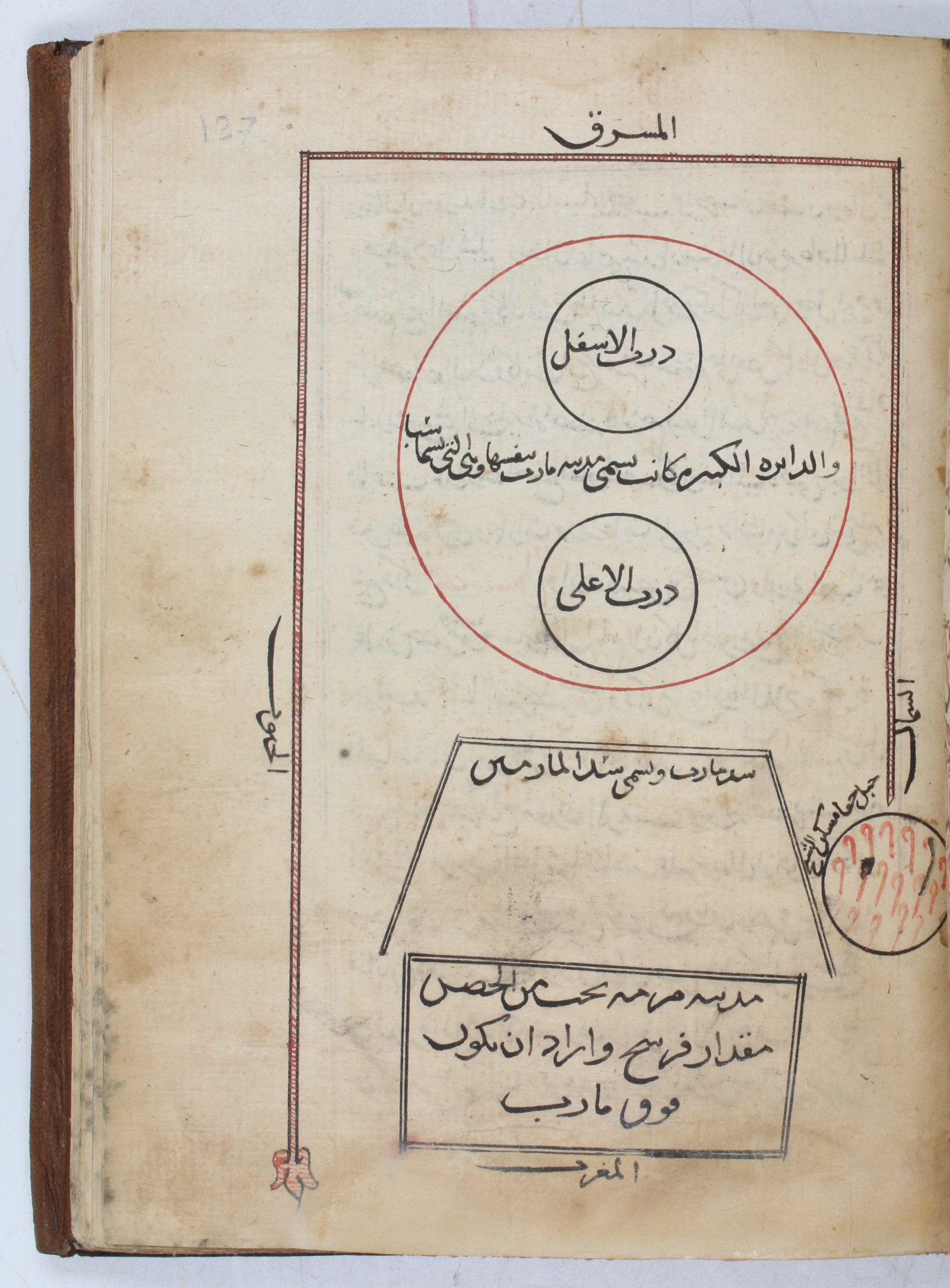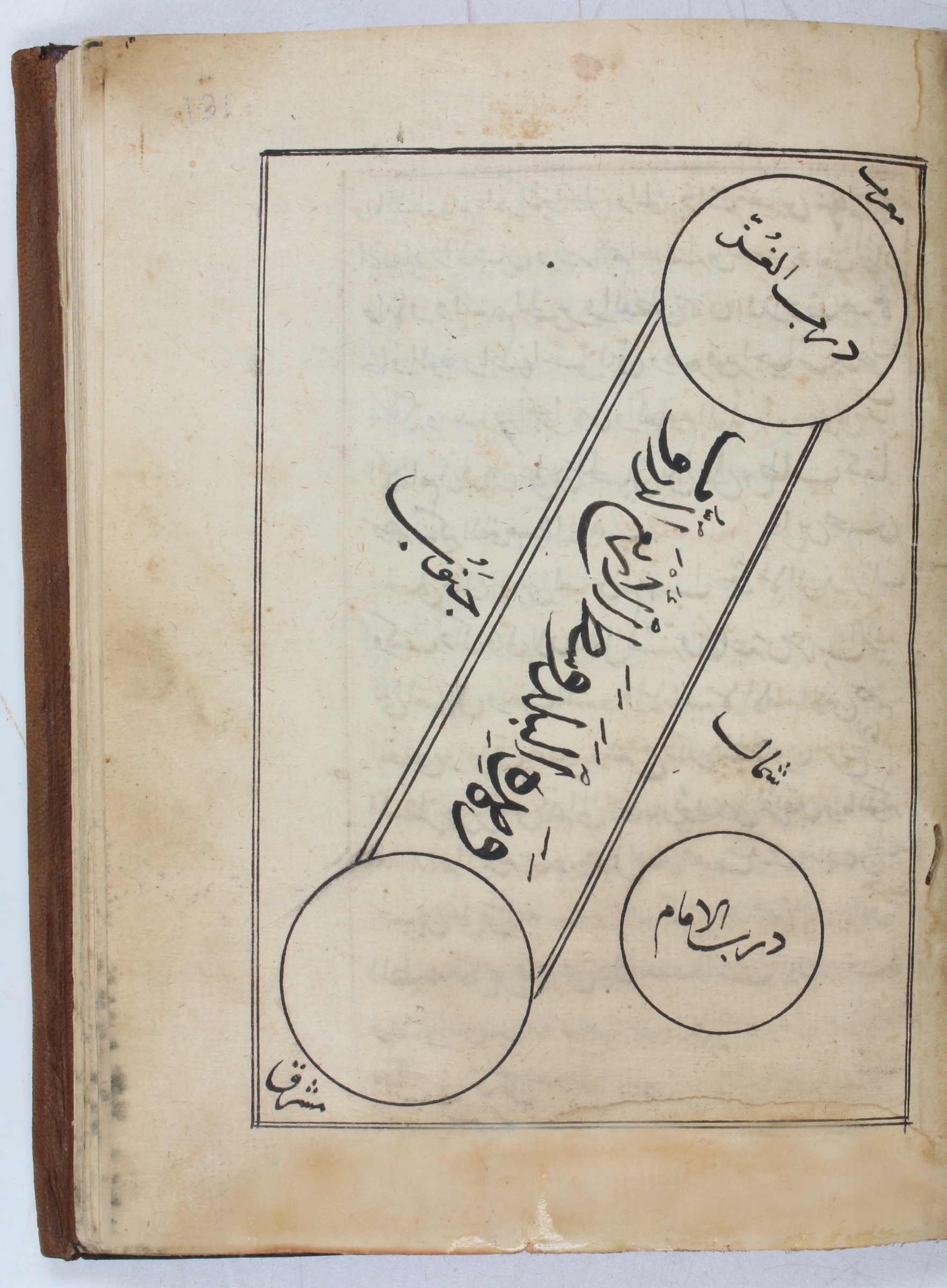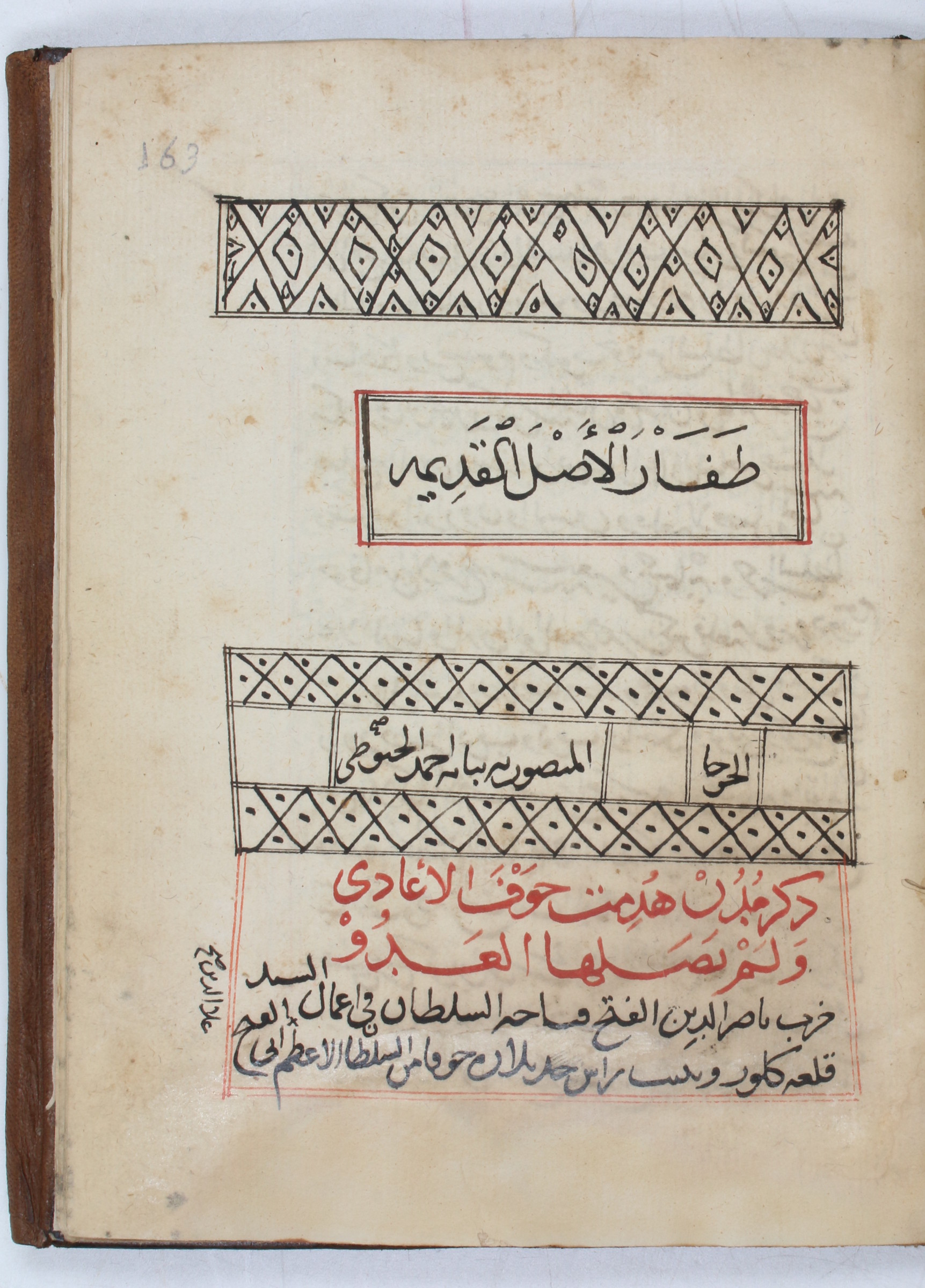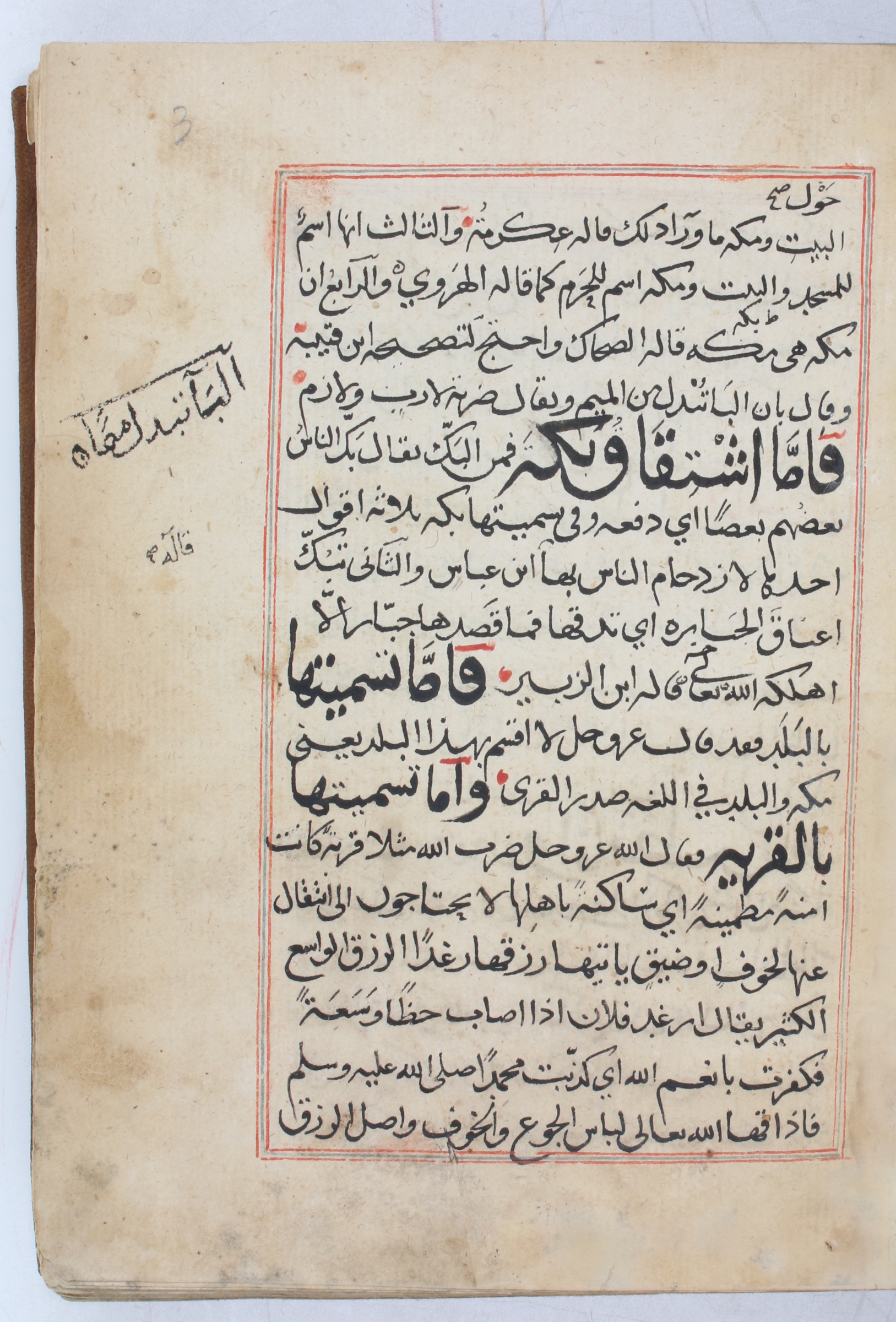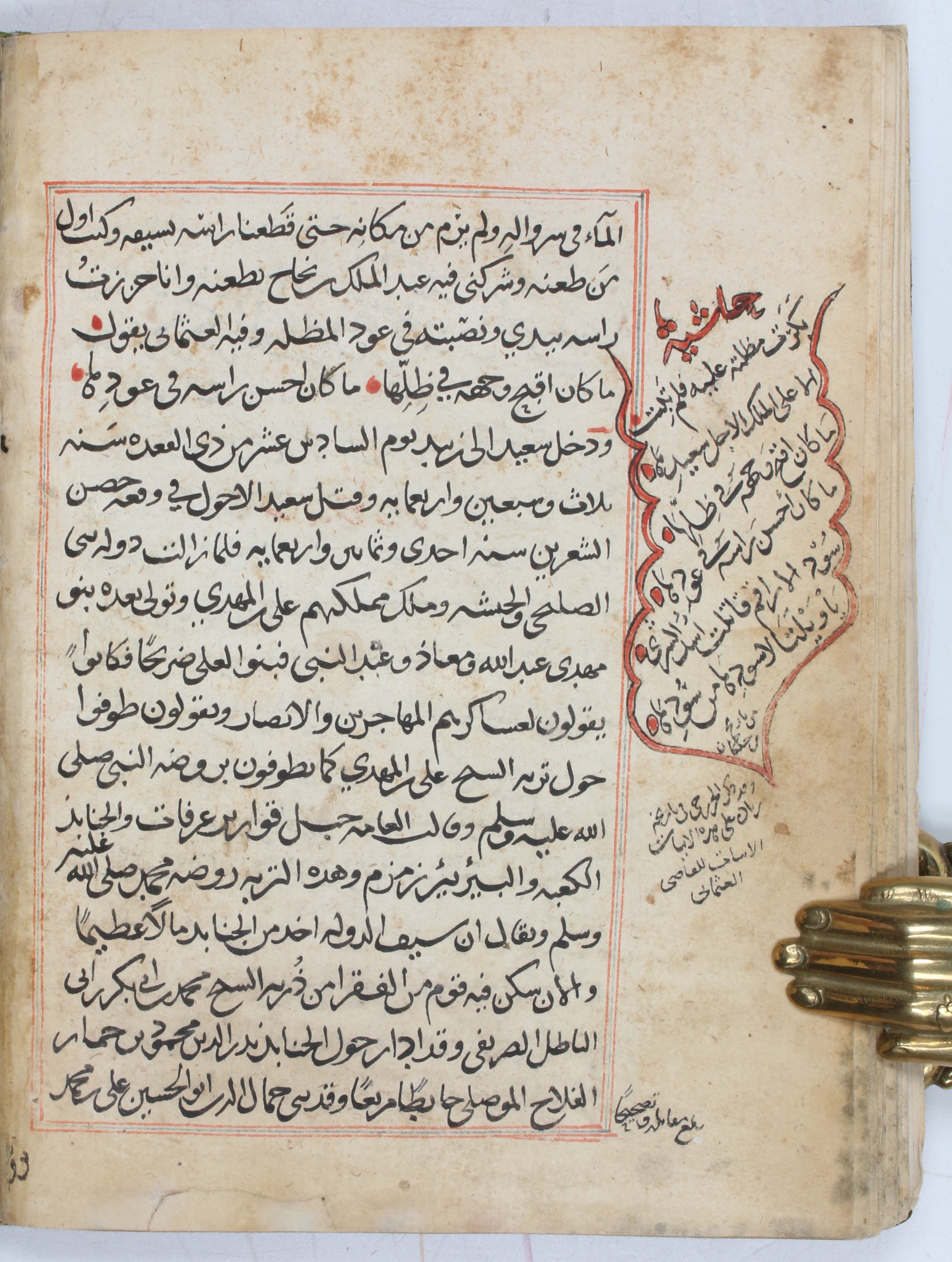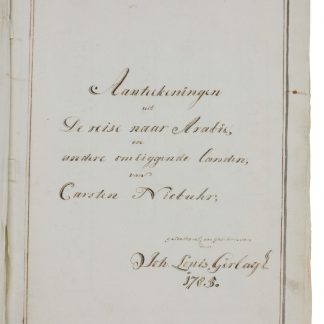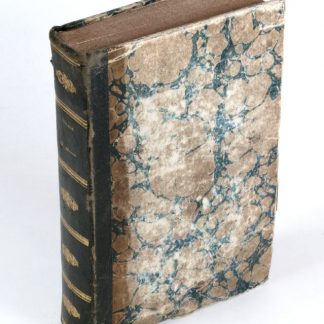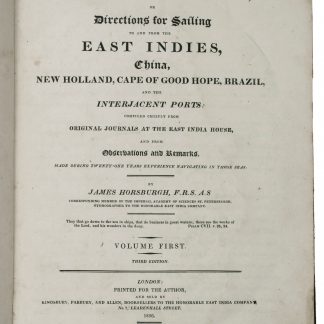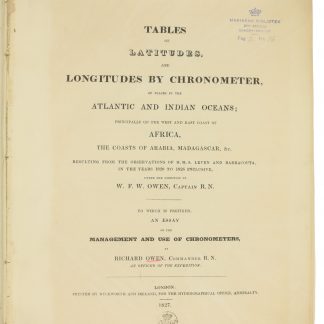An Arab merchant travelling the Peninsula in the 13th century: a hitherto unrecorded manuscript of one of the most important texts on the early topography of Arabia
Tarikh al-Mustabsir [Chronicle of an Intelligent Observer].
4to (155 x 201 mm). Arabic manuscript on dark cream paper. 187 ff. Black ink naskh script, catchwords in gold or in red. 17 lines per extensum. With 15 illustrations in the Balkhi school, showing cities in Arabia. Contemporary black leather binding with fore-edge flap, gilt borders and oval central ornament to both covers.
Highly rare manuscript of this early 13th-century travelogue dedicated entirely to the Arabian Peninsula: one of the most curious and intriguing specimens of Arabic travel literature, describing the cities, commerce, local dynasties and social mores of the region. First discovered by modern scholarship in 1864, this travel chronicle - one of the very earliest surviving travel accounts of Arabia - has since become acknowleged as a highly important source text for the medieval topography of the Peninsula, covering in great detail Hejaz, Yemen, Socotra, Nejd, Oman, the eastern Emirates, Bahrain, and the islands in the Gulf.
Ibn al-Mujawir probably hailed from the eastern provinces of the Islamic world, possibly Khorasan, and was very likely a merchant. The journey he describes sets out in Mecca and ends in Bahrain; unlike most other accounts of the region, it excludes entirely Egypt, Syria, Palestine or other areas in the vicinity. While experts disagree as to whether his book is based on a single journey or on several, there is no doubt that he personally visited all the places he describes, and his book is therefore conceived not as a work of geography (as were most earlier descriptions of these regions), but as a first-hand travel account. It is also one of the earliest illustrated examples of its genre, containing 15 illustrations of cities drawn in the diagrammatic manner known as the "Balkhi school".
Ibn al-Mujawir discusses people, social life, customs, buildings, and historical sites (some of which are unknown today) and, as a businessman, reveals a keen interest in the trade and commerce of the region. He provides what is probably the earliest account of islands such as Socotra and Farasan and even treats some unidentified islands like "Mosquito Island". No other Arabic travel report before Ibn Battuta discusses Oman in such detail, and indeed, this would appear to be the first Arabic travelogue (as distinguished from geographies or maps) to mention places in what is today the UAE: Julfar, Khor Fakkan, Diba, Kalba. Ibn al-Mujawir discusses pearling in the Gulf, dedicating an entire chapter to Bahrain.
There are only a very few copies of this text in institutional collections, including in the British Museum, in Istanbul (dating from the late 16th century) and in Leiden (19th century); based on the latter two, the Swedish orientalist Oscar Löfgren (1898-1992) published an edition of the Arabic text in 1951-54. No manuscript copies are listed in auction records, and the present example, only a few decades younger than the important Istanbul MS, is the first ever to have come to market. It was written in an area described in the text itself, in Yemen, at the time of the Zaydi tribal insurgencies against the Ottoman government.
Occasional light brownstaining and foxing with a few insignificant dampstains to the margins, but altogether in excellent state of preservation in a clearly contemporary binding.
Provenance: French trade.
GAL I, 482 (634) & S I, 883. Cf. G. Rex Smith, A Traveller in Thirteenth-Century Arabia. Ibn al-Mujawir's Tarikh al-Mustabsir (London, 2008).

